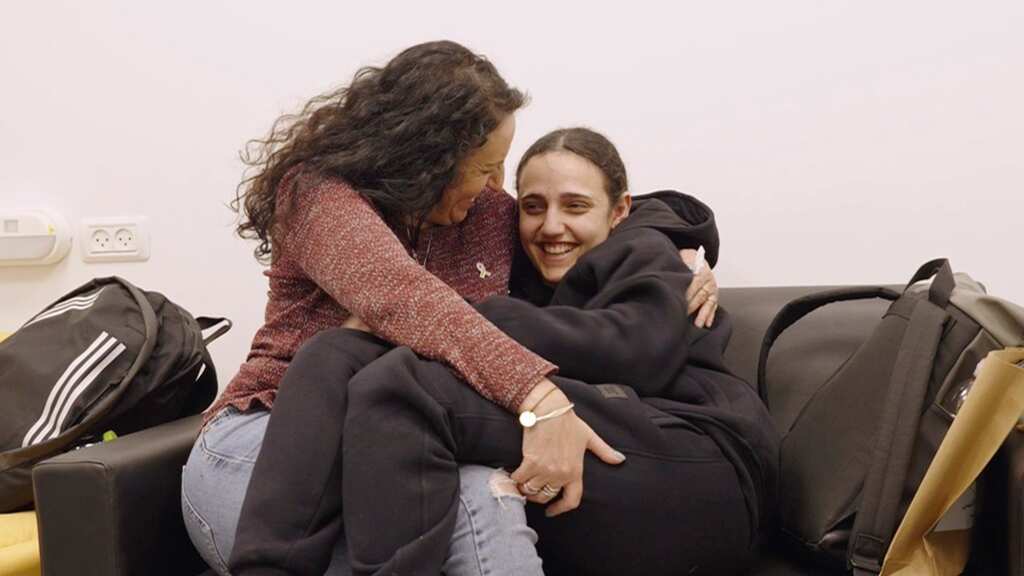The first three hostages released from Gaza arrived in Israel, the army announced on Sunday night, hours after the fragile ceasefire between Israel and Hamas came into effect. Their mothers were waiting to meet them.
The images showed the three women walking towards the Red Cross vehicles in the City of Gaza, surrounded by a crowd that grew to thousands as people raised their mobile phones and climbed onto the cars. The vehicles were accompanied by armed and masked men wearing Hamas' green bandanas, fighting to protect the delivery.
PUBLICIDAD
Images released by the Israeli army show the hostages walking between the Red Cross and soldiers. One of them, 28-year-old Emily Damari, raises her bandaged hand in a sign of triumph. The army explained that she lost two fingers in the attack that caused the war.
No more images of the three women were expected immediately, as they were taken for a medical evaluation. "They seem to be in good health," declared U.S. President Joe Biden in brief statements.
What was the reaction in Israel to the release of the hostages?
In Tel Aviv, thousands of people who had gathered to watch the news on big screens erupted in applause. For months, many had gathered in the square to demand a ceasefire agreement. The relatives of the women jumped, applauded, and cried.
"An entire nation embraces them," said Israeli Prime Minister Benjamin Netanyahu.
Romi Gonen, 24, Emily Damari, 28, and Doron Steinbrecher, 31, were the first ones released. Gonen was kidnapped from the Nova music festival, while the others were kidnapped from Kibbutz Kfar Aza. Damari holds dual Israeli-British citizenship and Steinbrecher has Israeli and Romanian citizenship.
The ceasefire marks the beginning of six weeks of calm and raises hopes for the release of nearly 100 remaining hostages and the end of the devastating 15-month war. A last-minute delay by Hamas postponed the start of the truce by almost three hours, but a spokesperson for the military wing of that group later stated that they are committed to the ceasefire.
Later, during Sunday afternoon, Israel released 90 Palestinian prisoners, as part of the ceasefire agreement with Hamas. In the occupied West Bank, families and friends gathered excitedly as cars honked their horns and people waved the Palestinian flag.
What is included in the ceasefire agreement?
The ceasefire agreement was announced last week after a year of mediation by the United States, Qatar, and Egypt. The outgoing Biden administration and President-elect Donald Trump's team had pushed for an agreement to be reached before the inauguration on Monday.
The first phase of the 42-day ceasefire should see the gradual return of 33 hostages and the release of hundreds of Palestinian prisoners. The next release of hostages is expected on Saturday.
There should also be an increase in humanitarian aid, with hundreds of trucks entering Gaza daily, much more than what Israel allowed before. The UN World Food Programme announced that the trucks started entering through two crossings. Biden's top Middle East adviser, Brett McGurk, told CBS that 800 trucks were expected on Sunday.
Negotiations on the much more difficult second phase of the ceasefire should begin in just over two weeks. There are big questions remaining, including whether the war will resume after the first phase.
